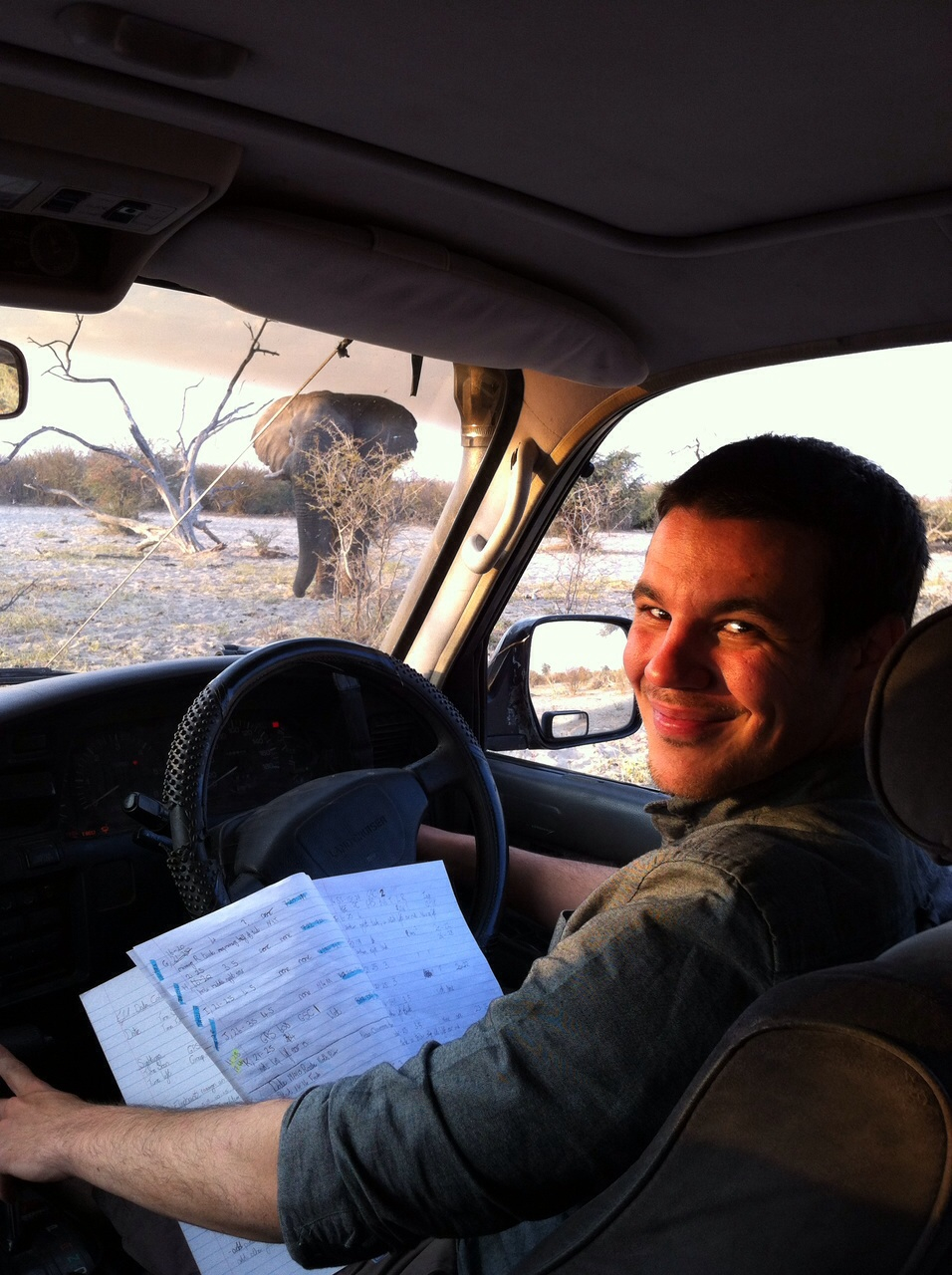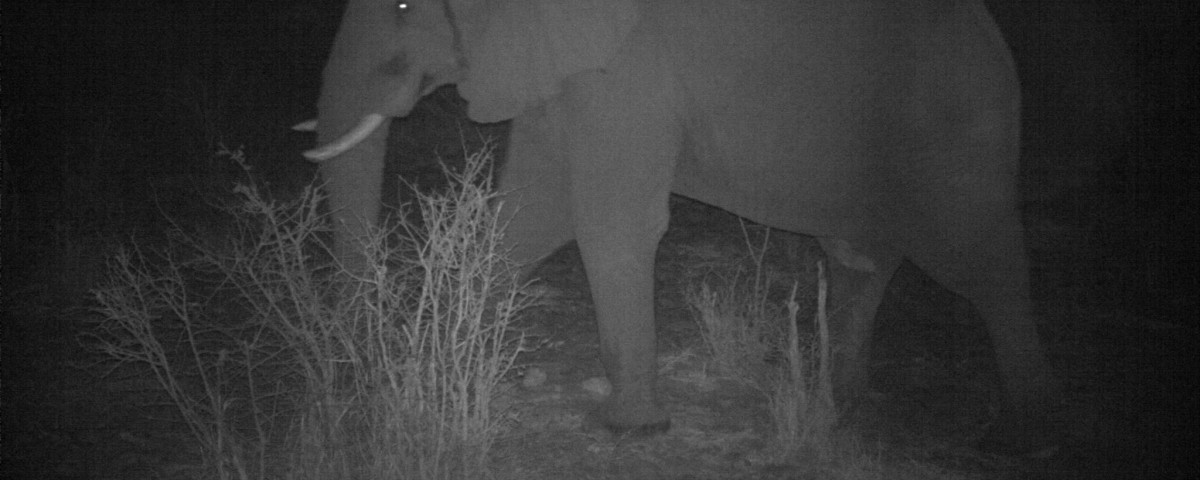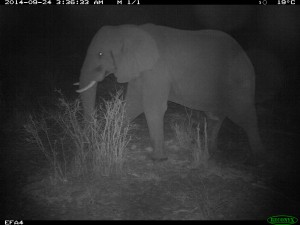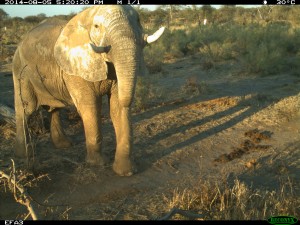
Habitat with Humanity by Aaron Kerr
August 11, 2015
First impressions in camp from Hayley
July 20, 2016Helen Shaw in Botswana

Having been in Botswana for just over ten months now, I can hardly believe I have only just under 2 months left of my time here; time appears to be going so quickly, but I have had a lot of different experiences and gained many new skills; aside from the research, my knowledge of and skills with cars has vastly increased. Thanks to spending some time working with our Community Officer, Mankind Molosiwa, I have learnt some basic Setswana phrases, such as ‘Reta kopana khumoso’ meaning ‘we will meet tomorrow’ as a direct translation, or can be used less formally as ‘see you tomorrow’. I find it quite a difficult language to pick up but I am determined to learn as much as possible to communicate with the Motswana people in their language.
I have become acclimatised to the weather, a vastly different climate than that of home in England. Since I have arrived the temperature has been slowly climbing from mid-20 to mid-40 degrees Celsius in October and November. The local people call October ‘suicide month’ due to the relentless heat beating down, unbroken by absent clouds, with the temperature gradually increasing a couple of degrees each day. Thankfully we are now in the wet season providing cooler temperatures; however there has been little rain so far and some signs of drought are beginning to show throughout the park. However the rains have finally arrived in a low but consistent quantity, meaning the local farmers will be able to obtain some crop yield and our chilli pepper human/ elephant mitigation project will be put to the test.
The main project which I am working on, in addition to the long term monitoring of the male elephant groups in the Western Makgadikgadi Pans National Park (MPNP) and the human/ elephant conflict mitigation project, is a camera trap study. Elephants for Africa (EfA) has eight different camera trap sites in the MPNP area which have been in place since 2014 and are part of a long term monitoring programme. Little is currently known about the extent of the varying wildlife species, their frequencies and activity patterns now present within the park. Another research assistant and I are currently working through the camera trap images, extracting data with two main lines of focus; the frequency and activity patterns of all species using elephant highways (well-trodden paths) as access points to the river, in addition to a separate focus on the frequency of elephants using the same highways and how their group dynamics may influence activity patterns.
There are many additional factors which may have a huge impact on species activity patterns, and the species’ decisions for using elephant highways. Time of year, time of day and moon phase are but a few examples of such factors, with the potential implication of food resources in the area and light levels providing an increased sense of security.
With regards to elephant group dynamics, the ages of whom another elephant may be travelling with could indicate a lot about potential knowledge transfers between individuals. It is hypothesised that the frequency of elephants in the area will increase over time; results from this camera trap study can be compared to the data collected on the research drives in the park over the same time period to compare trends in elephants frequencies and group compositions. This comparison will also enable the efficacy to which camera traps can be used as a tool to capture species group size to be determined; there has been some debate over this matter in the past, and EfA’s large database of both observational field work and camera trap images provides the perfect opportunity to accurately determine this. The possession of such knowledge regarding species presence, their frequency and their peak times of activity enables a picture of what is happening within an ecosystem to be drawn.
Further to this, the information derived could be used in wildlife and national park management departments, enabling effective management strategies to be put into place in time. This feedback of information is one of EfA’s founding principles, keeping research results within the country they were obtained so as they can be used to for the conservation and management of their wildlife. We are currently approaching the end of the data extraction phase, from which analysis of information should provide some clarity to many questions regarding the areas current ecological state.
At this time of year I am thinking further and further about my plans for next year. Having a background in biological, conservation and environmental science, in addition to international environmental law and policy, I want to find something which combines these two aspects; science and policy. My main interest is in the use of scientific research results in policy formation and management strategies; I feel this is an important topic which is vital for conservation strategies to be effective and successful. I have been interested in pursuing a PhD for a number of years and my time as a research assistant here and in previous places has confirmed this to me.
I am looking forward to the rest of my time here and to the planning and preparation for the next stage to come.


